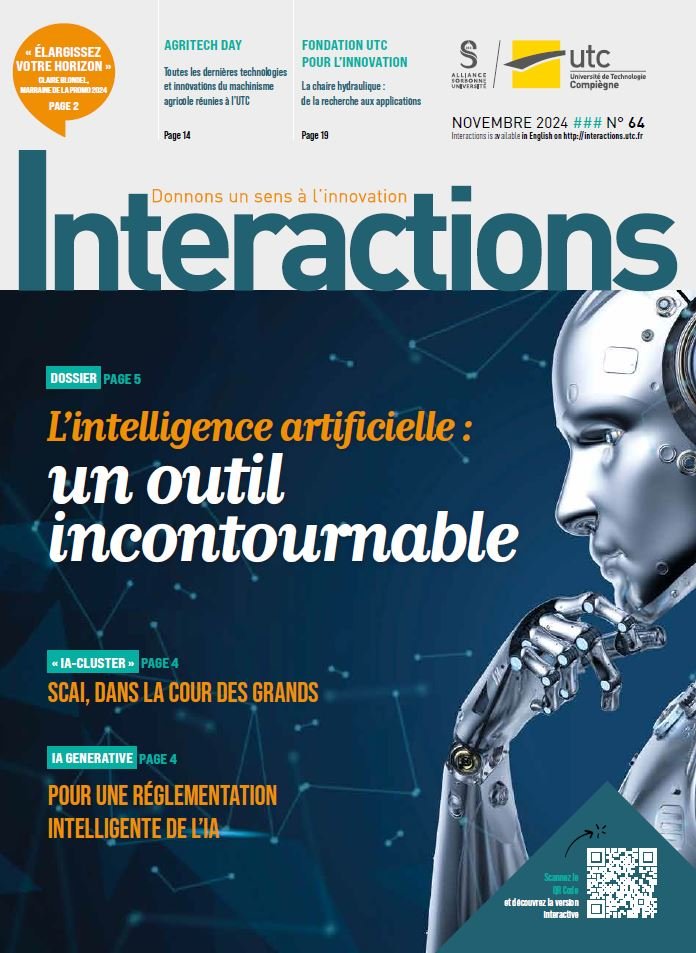Digital methods and simulation

Delphine Brancherie is a lecturer-research scientist in the Mechanical Engineering Department at UTC’s Roberval Laboratory and is also in charge of the digital mechanics team, one of the laboratory’s five teams with eleven lecturer-research scientists.
Among the team’s research priorities? If we combine the skills of all the team’s research scientists, our activities cover all elements of the digital simulation chain. For example, we are working on test-calculation dialogue, i.e., how to make the best use of information from mechanical or physical characterization upstream of simulation, in order to determine the best models and associated parameters to use in simulations. An important part of the team’s research activities consists in developing models and numerical resolution strategies dedicated to the study of the behaviour of structures, materials and fluids. We also work on optimization-related topics. Optimization of simulation as such, by making it more frugal by reducing calculation times, for example, but also optimization of the mechanical performance of a given material or structure, possibly taking into account sources of uncertainty in order to quantify robustness. Research that leads to the development of innovative numerical methods and perpetuates the historical heritage of the numerical mechanics team, among the first to deploy the finite element method in France», she adds.
Research at the crossroads of applied mathematics and mechanics has led Delphine Brancherie to take a particular interest in cohesive interfaces as a means of predicting fracture phenomena in materials and structures. «The aim is to develop numerical tools that can describe the behaviour of materials and structures from their healthy state right through to failure. In other words, to develop numerical methods that can reproduce the mechanical damage processes that lead to the failure of part structures, taking into account their architecture or microstructure», she explains.
But since then, Delphine Brancherie has extended her research to so-called coherent interfaces. In concrete terms? «These coherent interfaces are the result of modelling the local phenomena that take place on small scales when studying the behaviour of nano-reinforced materials. Recently, we have also become interested in issues involving multiphysical parameters. For example, we have been working with Anne-Virginie Salsac from UTC’s BMBI (Bio-Mechanics & Bio-Engineering) Laboratory on the conditions for microcapsule rupture in fluid flow situations. We have also recently been working with Ludovic Cauvin on modelling thermomechanical couplings in nanoreinforced materials», she points out.
Concrete projects in progress? «I’m currently working on an ANR project entitled «Influe», involving Cerema in Compiègne, the Pprime Institute in Poitiers and the Établissement Public Territorial du Bassin Saône et Doubs (EPTB), which is responsible for water management in the Saône watershed. The aim of this project is to develop experimental and digital tools to understand the impact of increased river traffic on navigable infrastructures as such. Pprime is mainly in charge of the experimental part, while UTC and Cerema are concentrating on the digital part. We’re working on this project with a colleague from Cerema, who is a fluids mechanics “computationalist” and has a very good command of the tools needed to predict the hydrodynamics associated with the passage of barges, while I’m contributing my skills in solid mechanics to understand and therefore anticipate the impact of these passages on the porous material of the canal/river banks. What we’re particularly interested in is the effect of increased river freight traffic on bank stability, with the aim of making bank protection as natural as possible. The aim is to provide answers to questions such as: are riverbanks and infrastructures threatened in their current state? What preventive measures can be implemented to avoid excessive damage? And finally, what type of naturabank protection should be put in place, and how should these protections be qualified,» concludes Delphine Brancherie.
This project has just commenced and should culminate in the launch of a PhD thesis in the coming months.
MSD




